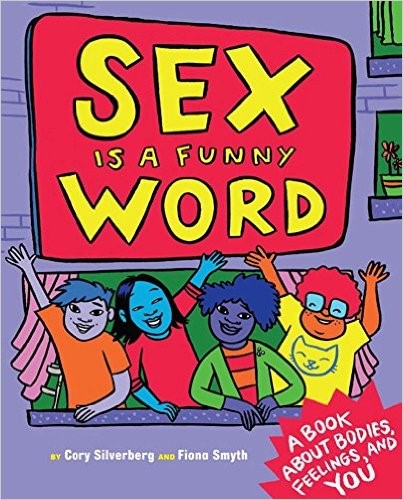Saying Yes or No: What Is Consent?
This video features an example of a young person whose partner is pressuring them for sexual activity. It includes definitions of consent and coercion and clarifies that if drugs or alcohol are involved, consent cannot be given.The video also defines laws of consent and explains that the laws differ state-by-state. It also broadens the definition of sexual contact to include kissing, hugging, touching. The video emphasizes that you can change your mind about sexual contact at any time for any reason, and that talking to a trusted adult could help. [AMZ-037]
Youth
Sexual consent is when people agree to engage in certain sexual behaviors. They can express their consent by saying, “Yes, that’s okay with me.” Just because someone doesn’t say “no,” it doesn’t mean consent has been given. Asking for consent and giving consent for any sexual behavior is very important. You have the right to say “no” to any behavior that you do not want to engage in at any point, for any reason, and your partner must respect your decision. Your partner also has the right to say “no” to any behavior at any point, for any reason, and you must respect their decision. Consent must be given willingly—if a person is forced to consent to any type of behavior, that’s not consent.
In order for people to consent to sexual behaviors, they must be able to consent, which means they are not under the influence of drugs or alcohol and are of legal age to be able to consent. Each state has different laws regarding consent, and it’s a good idea to become familiar with these laws. Consent can get confusing, so if you are ever unsure whether a person is consenting, it is a good idea to ask them.
FAQ
It can definitely be confusing to know when you can and can’t kiss someone you like. The only way to know for sure if you can kiss your partner or engage in any sexual behaviors with them is to ask them each and every time. This is called getting their consent. It is very common to think that your partner may be into kissing or another sexual behavior by the way they are acting, but just because someone is acting a certain way, it doesn’t necessarily mean they want to engage in a behavior.
Just because a person consents to kissing, it doesn’t mean that they are consenting to all sexual behaviors. It may seem like they want to go further or engage in other behaviors, but the only way to know for sure is to ask for consent. It is important to communicate with your partner about what behaviors they want to engage in each and every time.
It can be confusing if someone is saying “yes” to sexual behaviors when they have been drinking or using drugs. The one thing to remember is that since these substances can interfere with people’s ability to make a decision, they are not able to consent, even if they are saying “yes.” So if someone engages in sexual behaviors with someone who has been drinking or using drugs, this is considered sexual assault—even if they asked for consent first.
Parents
Young people should understand that sexual consent means that both people actively and verbally agree to sexual activity. Sexual activity means many things to different people and is generally a lot more than just oral, anal or vaginal sex. It can include kissing, hugging, touching, rubbing and many other behaviors that people might find pleasurable. If both people do not say “yes,” then consent has not been given.
Young people should also understand that they and their partners have the right to change their mind about what they do or do not want to do at any time. This means that even if they are engaging in sexual acts with a person and their partner changes their mind, they must stop whatever they are doing and respect their partner’s wishes. Not respecting those wishes could be crossing the line into illegal behavior.
Trying to persuade someone into saying “yes” when they are not sure or do not want to have sex is not consent. It is called sexual coercion.
If a person is under the influence of drugs or alcohol, they cannot legally give consent. Engaging in sexual activity with someone who is under the influence of drugs or alcohol is considered rape.
A person must be a certain age in order to be able to legally give consent. This age is called the “age of consent,” and age of consent laws vary from state to state.
Adults should make it very clear that a person who has been sexually assaulted is never at fault and should tell a trusted adult if they have been assaulted. Clearly communicating this message can ensure that young people feel safe coming to you or another trusted adult.
CONVERSATION STARTERS
If you start essential conversations about topics like consent with your children, then they will know they can come to you with questions. The easiest way to start these conversations is to talk about issues as they come up in everyday life, like while watching shows or movies together.
Consent is unique in that it can be discussed and demonstrated in many non-sexual situations in everyday life. Using each other’s belongings and giving hugs or kisses are just a couple of opportunities to demonstrate consent with your child.
Here are some ways to start these conversations:
When you want to hug or kiss your child, getting your child’s permission first is a great way to demonstrate consent. If this is not something you have done in the past, you can explain why you are asking for their consent and begin the discussion about why it is important to gain consent—especially in sexual situations.
If you are watching a show or movie where two people are kissing or about to kiss, you can use this as an opportunity to ask your child if the people kissing consented to that behavior. You could also ask what someone should do if they are not sure their partner is consenting.
Additional Resources
Educators
Young people should understand that sexual consent means that both people actively and verbally agree to sexual activity. Sexual activity means many things to different people and is generally a lot more than just oral, anal or vaginal sex. It can include kissing, hugging, touching, rubbing and many other behaviors that people might find pleasurable. If both people do not say “yes,” then consent has not been given.
Young people should also understand that they and their partners have the right to change their mind about what they do or do not want to do at any time. This means that even if they are engaging in sexual acts with a person and their partner changes their mind, they must stop whatever they are doing and respect their partner’s wishes. Not respecting those wishes could be crossing the line into illegal behavior.
Trying to persuade someone into saying “yes” when they are not sure or do not want to have sex is not consent. It is called sexual coercion.
If a person is under the influence of drugs or alcohol, they cannot legally give consent. Engaging in sexual activity with someone who is under the influence of drugs or alcohol is considered rape.
A person must be at certain age in order to be able to legally give consent. This age is called the “age of consent,” and age of consent laws vary from state to state.
Adults should also make it very clear that a person who has been sexually assaulted is never at fault and should tell a trusted adult if they have been assaulted. Clearly communicating this message can ensure that young people feel safe coming to you or another trusted adult.
National Sex Education Standards
Define sexual consent and sexual agency
Evaluate the impact of technology (e.g., use of smart phones, GPS tracking) and social media on relationships (e.g., consent, communication)
Identify factors (e.g., body image, self-esteem, alcohol and other substances) that can affect the ability to give or perceive consent to sexual activity
International Technical Guidance on Sexuality Education
Discussion Questions
- What were some of the examples of consent you noticed in the video?
- Why is consent important?
- Did watching this video change your ideas about consent? If so, how?
- What can a young person do to make sure they get consent from a partner?





